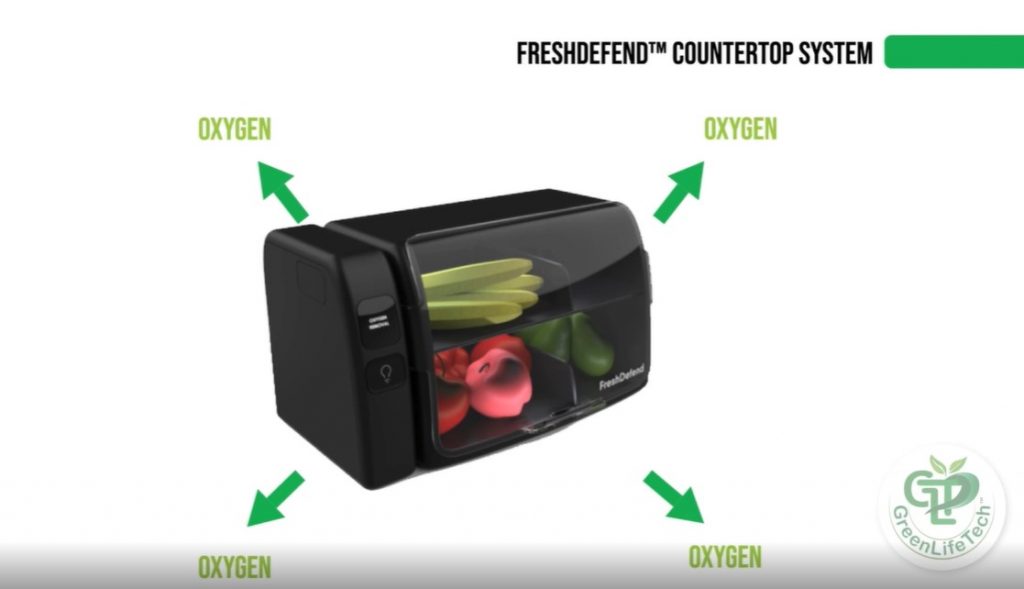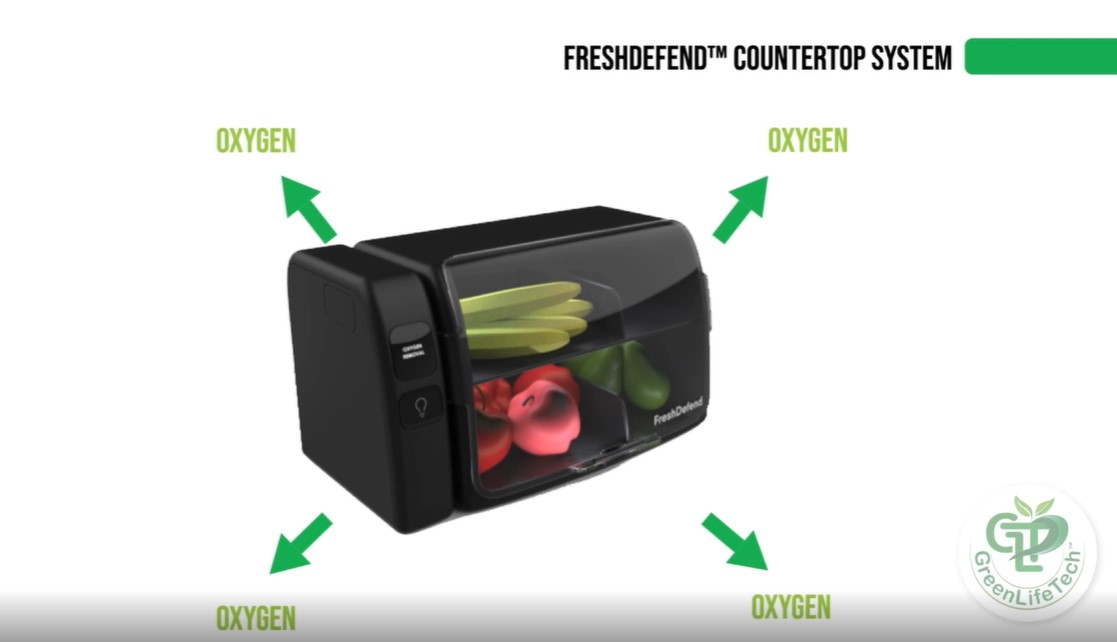Bruce Roesner, the founder of Green Life Tech, is looking to tackle the issue of food waste with a new technique that extends the shelf life of produce up to five times longer. In an interview with the Guru of Geek, Marlo Anderson, at CES 2023, Roesner highlights the problem of food waste, with 35% of all fruits and vegetables grown being discarded due to spoilage. He notes that the average US household spends over $1,800 annually on wasted food. Roesner developed a patent-pending technique that removes oxygen from the environment around the produce and replaces it with nitrogen, extending shelf life. The technique also kills bacteria through the use of a small amount of ozone. Green Life Tech plans to launch a Kickstarter campaign next month, with the product expected to be available in six months.

Transcript
So I don’t know about you guys, but I really have a problem when I wake up in the morning and I go down and I’m gonna have a banana and it’s got a few brown spots on it. So I hurry up and eat one, but there’s three or four more left. So tomorrow morning I already know that this banana is gonna be like for banana bread now, right?
Which by the way, is okay with me. I love banana. But this is a big issue with fruits and vegetables, isn’t it? Absolutely. Most people don’t realize that 35% of all fruits and vegetables grown are never consumed because of this issue. They rot that decay, they’re thrown in the landfills, and we throw 300 million pounds a day into our landfills in the us.
So what do you think that costs the average person like over a yearly basis? Average household is over $1,800 a year and wasted, thrown away food thrown away fresh fr produce. Oh my goodness. Oh. And I think the other thing that comes into this is that when you look at something and it doesn’t look so appealing, you are really like okay, I’m gonna eat the chips instead.
Because that, is gonna be Okay. So it has health consequences as well. Absolutely. And it’s hard to determine the exact number, but the EPA and U S D A last year published that it cost the United States $2 trillion a year, people not eating healthy fruits and vegetables.
Wow. Wow. So Bruce, you decided that you’re done with this. I’m done thrown away my bananas and my apples. What did you do about this? I, you’re right. I was absolutely done with fruits and vegetables and wine and I got tired of it and I said, there’s gotta be a better way. So a couple years ago I started looking into it and I found out that I could develop, I developed a technique which we subsequently patented and so on, and it’s a very simple technique which circulates the.
Takes the oxygen out, leaving nitrogen from the air behind, which is an inert environment. And that nitrogen environment extends to shelf life by up to five times by doing it. So the other thing I like about this unit that you developed is that, that the fruit looks amazing in there, right? It’s lit up.
It’s like on the counter when I’m gonna go into the kitchen, now I’m gonna see. And I’m gonna go, Hey, I’m gonna eat that banana now. So that’s exactly, we did a lot of work on the design of the system, so it looks nice and so it really shows the fruits and vegetables as you can see, the bright white light and so on, so you can really see what’s there and the way you get nice, healthy food.
And hopefully your diet improves a little bit and your health improves. One thing I didn’t mention is when we take the oxygen out at the end of the process, we put a little bit of ozone in there and for those fewer, not envir aware of the chemical and so on. Ozones just ionized oxygen. So we generate this ozone.
The ozone is the most deadly chemical to the bacteria, so you kill off all the bacteria, you’ve extended shelf life out, and the ozone decays back into breathable oxygen. And the oxygen that we’ve removed already is just put back into the air. And when I go in and grab a banana, open up the lid, pick it.
And then you close it back up and it goes through this whole process again. It does the, exactly. Okay. As soon as you close it, it goes through the cycle, removing the oxygen, putting a little ozone back in there and your food’s extended out. Like I say, you’ll get up to three to five times the normal shelf life of a product.
Yeah’s, pretty, that’s pretty impressive. So how do I go about getting one of these? You just have to wait a little while. We’re gonna be doing a Kickstarter program next month. Okay. Okay. Watch us on Kickstarter on our website. And we expect to have the product out in about six months that, that product there.
Okay. Okay. And like I said, we’re also looking at commercializing it for the other parts of the food chain. We’re working on SBI contracts, working with hopefully some. OEMs here at the facility we’re looking at. I was actually thinking about that too. Grocery stores would be all over this, I would think.
Cuz I can’t imagine the amount of food that they throw or produce that they throw away. Between three and 6% of what they bring in is thrown away. It’s phenomenal mountain actually. We have a couple of grocery chains we’ve talked to are very excited about this. And we actually did a project for the EPA part for the grocery store, for putting it in bags.
In other words, as you bring your food out, put it in bags and so on, you take the oxygen out, put a little ozone. and it extends its shelf life and so on. I know we’re talking about produce here, but something else you said a little earlier was wine. How does this work with wine? It actually works in the exact same way.
We have an auxiliary line coming out of the system. We plug it in, plug to the bottle, and we run the system and removes the auction, leaving the nitrogen inside. It extends the shelf life of the wine as well. Any hydrocarbon obviously deteriorates with oxygen, so it’ll extend that shelf life out. Okay. And we’ve actually had some discussions in the medical field.
That’s a big area too, but it takes a long time to get into it. Sure. And that’s the reason we started in this area. Sure. All right, Bruce, I appreciate it. This is your guru of Geek Marlo Anderson at CS 2023.






